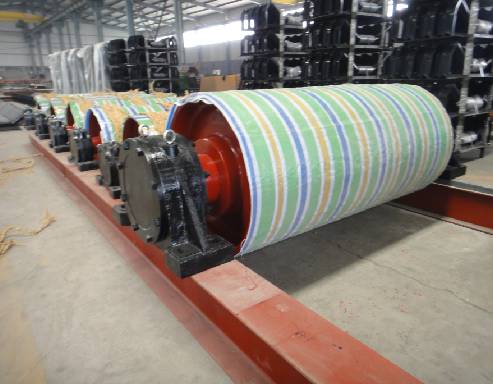 Afrikaans
Afrikaans  Albanian
Albanian  Amharic
Amharic  Arabic
Arabic  Armenian
Armenian  Azerbaijani
Azerbaijani  Basque
Basque  Belarusian
Belarusian  Bengali
Bengali  Bosnian
Bosnian  Bulgarian
Bulgarian  Catalan
Catalan  Cebuano
Cebuano  Corsican
Corsican  Croatian
Croatian  Czech
Czech  Danish
Danish  Dutch
Dutch  English
English  Esperanto
Esperanto  Estonian
Estonian  Finnish
Finnish  French
French  Frisian
Frisian  Galician
Galician  Georgian
Georgian  German
German  Greek
Greek  Gujarati
Gujarati  Haitian Creole
Haitian Creole  hausa
hausa  hawaiian
hawaiian  Hebrew
Hebrew  Hindi
Hindi  Miao
Miao  Hungarian
Hungarian  Icelandic
Icelandic  igbo
igbo  Indonesian
Indonesian  irish
irish  Italian
Italian  Japanese
Japanese  Javanese
Javanese  Kannada
Kannada  kazakh
kazakh  Khmer
Khmer  Rwandese
Rwandese  Korean
Korean  Kurdish
Kurdish  Kyrgyz
Kyrgyz  Lao
Lao  Latin
Latin  Latvian
Latvian  Lithuanian
Lithuanian  Luxembourgish
Luxembourgish  Macedonian
Macedonian  Malgashi
Malgashi  Malay
Malay  Malayalam
Malayalam  Maltese
Maltese  Maori
Maori  Marathi
Marathi  Mongolian
Mongolian  Myanmar
Myanmar  Nepali
Nepali  Norwegian
Norwegian  Norwegian
Norwegian  Occitan
Occitan  Pashto
Pashto  Persian
Persian  Polish
Polish  Portuguese
Portuguese  Punjabi
Punjabi  Romanian
Romanian  Russian
Russian  Samoan
Samoan  Scottish Gaelic
Scottish Gaelic  Serbian
Serbian  Sesotho
Sesotho  Shona
Shona  Sindhi
Sindhi  Sinhala
Sinhala  Slovak
Slovak  Slovenian
Slovenian  Somali
Somali  Spanish
Spanish  Sundanese
Sundanese  Swahili
Swahili  Swedish
Swedish  Tagalog
Tagalog  Tajik
Tajik  Tamil
Tamil  Tatar
Tatar  Telugu
Telugu  Thai
Thai  Turkish
Turkish  Turkmen
Turkmen  Ukrainian
Ukrainian  Urdu
Urdu  Uighur
Uighur  Uzbek
Uzbek  Vietnamese
Vietnamese  Welsh
Welsh  Bantu
Bantu  Yiddish
Yiddish  Yoruba
Yoruba  Zulu
Zulu drive pulley in belt conveyor
The Role of Drive Pulley in Belt Conveyors
Belt conveyors are a fundamental component of many industrial systems, facilitating the efficient movement of materials across various distances. A vital element of these systems is the drive pulley, which plays a crucial role in the functioning and efficiency of the conveyor.
Understanding the Drive Pulley
The drive pulley, often located at one end of the conveyor belt, is responsible for moving the belt itself. It is typically powered by an electric motor, which generates the necessary torque to rotate the pulley and, in turn, the belt. The design and construction of the drive pulley can significantly impact the overall performance of the conveyor system, influencing factors such as speed, load capacity, and durability.
Drive pulleys come in various sizes and materials, depending on the specific application and the environment in which the conveyor operates. Common materials include steel, aluminum, and various polymers, each chosen for their strength, corrosion resistance, and weight characteristics. The pulley must be robust enough to withstand wear and tear from constant operation and the materials being transported.
Types of Drive Pulleys
There are several types of drive pulleys, including lagged, crowned, and flat pulleys. Lagged pulleys feature a surface treatment, often made from rubber or other materials, that enhances friction between the belt and the pulley. This is particularly important in applications requiring high torque, as it prevents slippage and ensures efficient power transfer.
drive pulley in belt conveyor

Crowned pulleys have a slight curve along their width, which helps to keep the belt centered on the pulley. This design minimizes belt misalignment and potential wear, contributing to a longer lifespan for both the belt and the drive pulley. Flat pulleys, comparatively simpler in design, are often used for lighter applications or where precise alignment is not as critical.
Maintenance and Troubleshooting
Regular maintenance of the drive pulley is essential for optimal conveyor performance. This includes inspecting for signs of wear, ensuring proper tensioning of the belt, and lubricating bearings where applicable. Neglecting maintenance can lead to issues such as belt slippage, reduced efficiency, and premature failure of the pulley itself.
When problems arise, troubleshooting typically begins with examining the drive pulley. Signs of wear, such as grooves or uneven surfaces, indicate that it may need replacement or repair. Additionally, checking the alignment of the pulley and the overall tension of the conveyor belt is critical to ensure smooth operation.
Conclusion
In conclusion, the drive pulley is a key component of belt conveyor systems, impacting their efficiency, load capacity, and operational longevity. Selecting the appropriate type of drive pulley for a specific application, alongside regular maintenance and monitoring, can lead to significant performance improvements and cost savings in industrial operations. As industries continue to evolve, the role of the drive pulley will remain essential to ensuring seamless material handling processes. By understanding and enhancing the functionality of this component, businesses can optimize their conveyor systems and support their operational goals.
-
Revolutionizing Conveyor Reliability with Advanced Rubber Lagging PulleysNewsJul.22,2025
-
Powering Precision and Durability with Expert Manufacturers of Conveyor ComponentsNewsJul.22,2025
-
Optimizing Conveyor Systems with Advanced Conveyor AccessoriesNewsJul.22,2025
-
Maximize Conveyor Efficiency with Quality Conveyor Idler PulleysNewsJul.22,2025
-
Future-Proof Your Conveyor System with High-Performance Polyurethane RollerNewsJul.22,2025
-
Driving Efficiency Forward with Quality Idlers and RollersNewsJul.22,2025





























